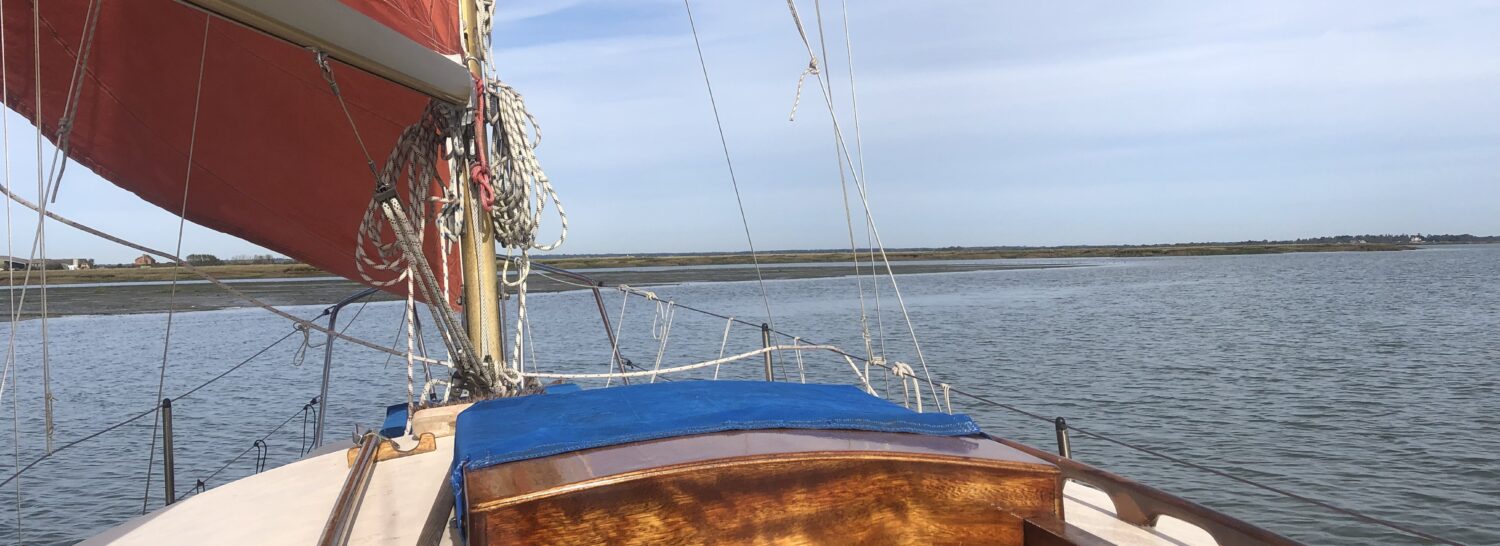During the early summer a film was released about ‘Wind, Tide and Oar’ by a film maker and ‘ardent’ supporters of the non use of propulsive power in the boat’s belly.
The mate and I attended one of numerous showings of the film aboard the Sea-change Sailing Trust’s barge, Blue Mermaid, which had received a grant to take the film to a host of east coast ports for public screening. The ports ranged from Lowestoft to Ramsgate, the allowable trading limits of the Blue Mermaid.
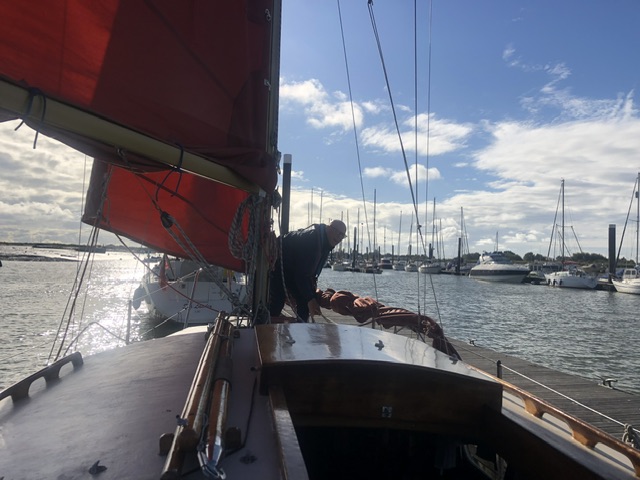
The Blue Mermaid is a new spritsail barge which has gained a 110 tonne cargo carriage certificate. Unfortunately, finding such loads has proved difficult but numerous smaller cargoes gave been carried, using wind and tide alone.
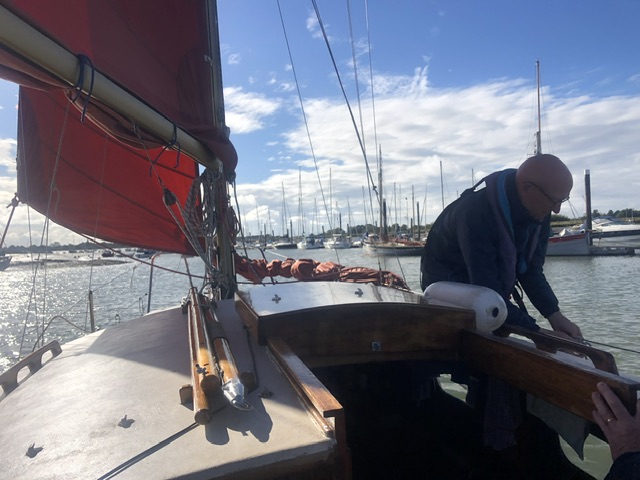
Now, as many will know, the diesel under Whimbrel’s cockpit floor is used as little as possible. If a passage can be safely made under sail alone, that is way it is done. During the summer period, we covered 700 nautical miles and I purchased a mere 30 litres of fuel. We traversed the Thames to St Katharine Docks twice, sailing most of those miles. Unfortunately, there were a couple of long passage trips where the engine was called into use.
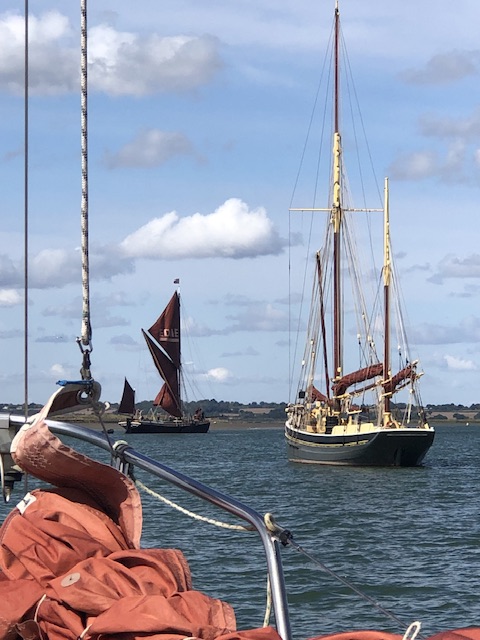
It is the same too for departures. From an anchorage and mooring buoys especially, and a marina berth too if it is feasible without causing a hazard to others. The same is true for arrivals.
During last year a meet took place between vessels and people who followed the principle of engine-less sailing. The event was based around Pin Mill with sailing at the heart. Among a group of traditional yachts and one in particular more modern, two spritsail barges took part, EDME and Blue Mermaid. The film has footage of the goings on.
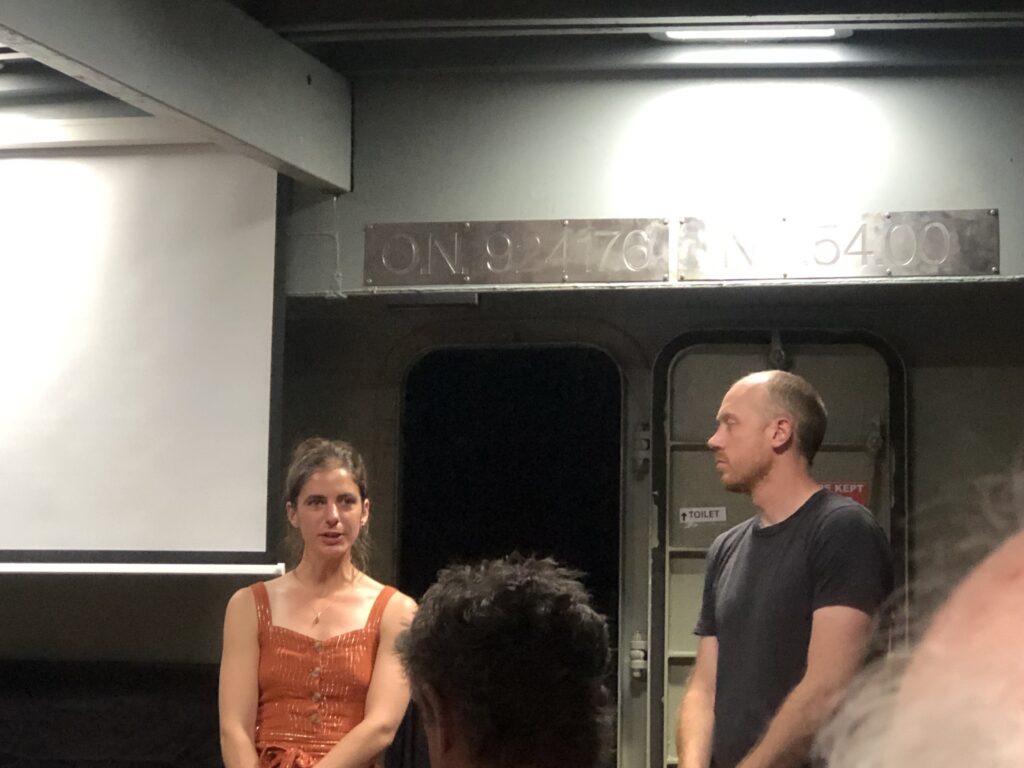
The film discusses the pros and cons of engine-less sailing, but something is missing, I thought, because the basics of the process of getting under way from say a buoy/anchor wasn’t covered, neither was a Marina entry/departure – the be all mooring for many ‘normal’ sailors.
Larger craft are more likely to anchor off than a ‘family boat’ but film did cover a chap with a ‘forty-footer’ moored in Ipswich where apparently sailing is not allowed in the dock. Really: I have twice in recent times sailed towards the lock!
The film had far too much time aboard a West Country Lugger to my mind – there were some good moments, nice, but what was the film time for?
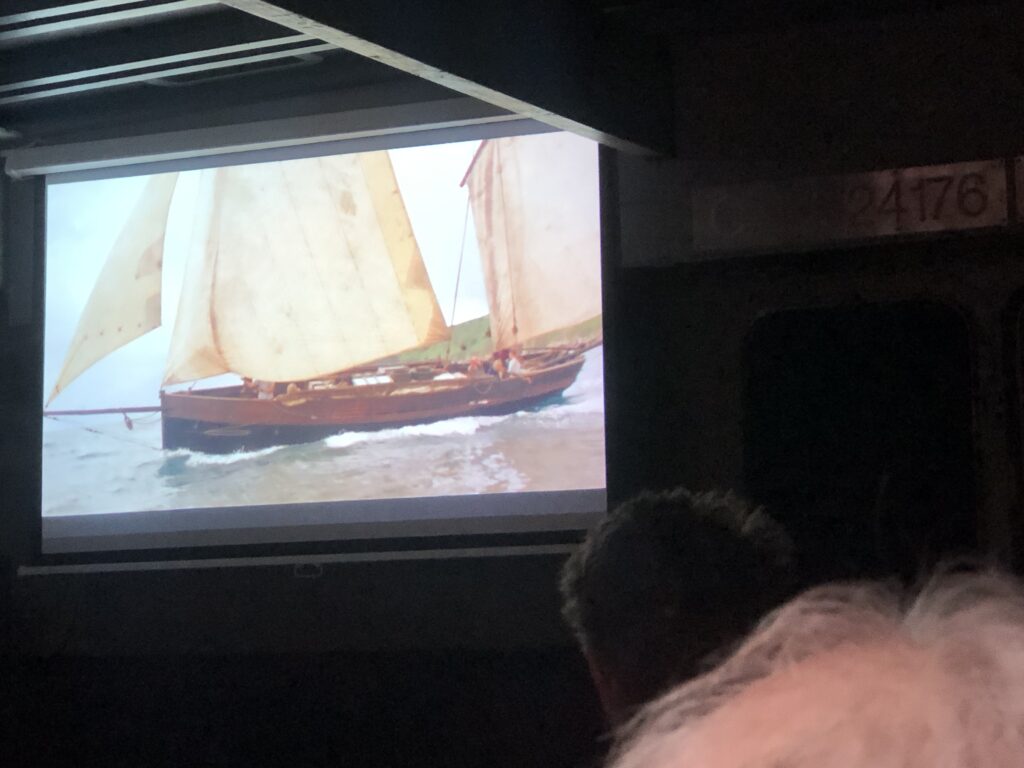
The Co-producers are a half brother and sister and I wondered as it progressed if this was ‘their’ film?
There seemed to be a lot of ‘cosy cabin talk’ about environment and achievements. The lady removed an engine from her boat, yet is filmed getting away from her Maldon berth with aid of motor boat … not really in the spirit!
Christobel wanted to ask her whether or not she would sail with a young baby aboard without back up propulsion – would she feel different?
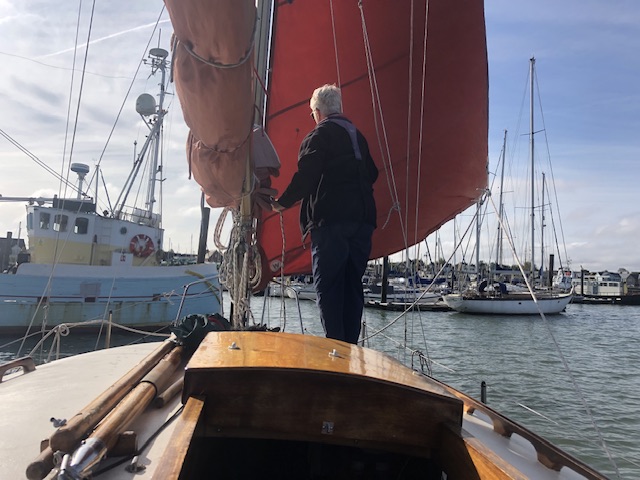
Over the forty plus years of owning Whimbrel, the mate and I have developed well honed routines, well practiced and regularly accomplished: reliance on one’s engine with a sailing vessel is unsatisfactory seamanship.
Knowing you have learnt how to get your boat to do what you want strangles the ‘fear’ of having to carry out such manoeuvres when a need comes along, as it surely will with a mechanical device tucked away under the floorboards…
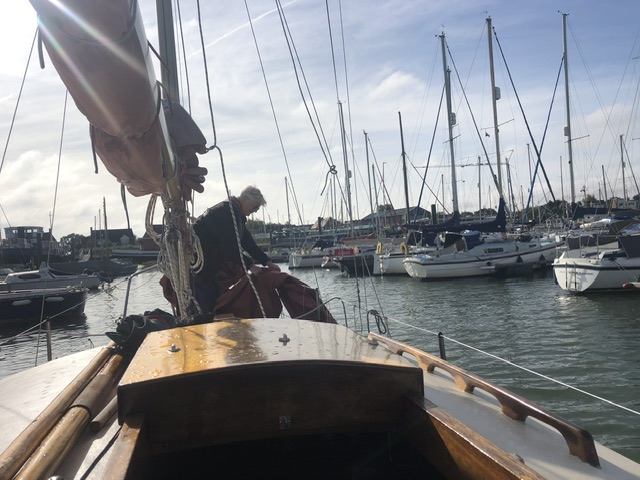
It is fun too to achieve what you want – Whimbrel tracks far better under sail or momentum than under power. A gentle touch of helm is instantly answered. Note below: she is gliding towards the mooring pontoon, speed slowing allowing time to step over, pick up the forward spring, drop it onto cleat to arrest her.
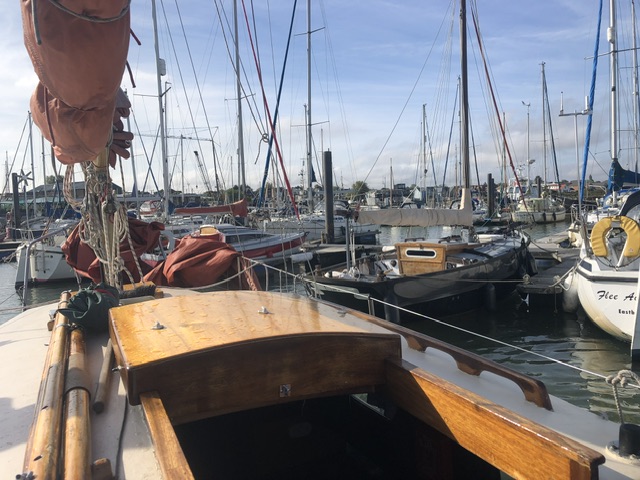
I do it alone too, using a short line onto the outer pontoon cleat. Sometimes a boat hook is called for, but no one has been hit or any damage done to ourselves.
Back to the film – cargo sail is discussed. As a retired Marine Engineer Officer, I am fully aware that the maritime world is working on ‘sail’ assist, but a general reversion to sail is not credible.
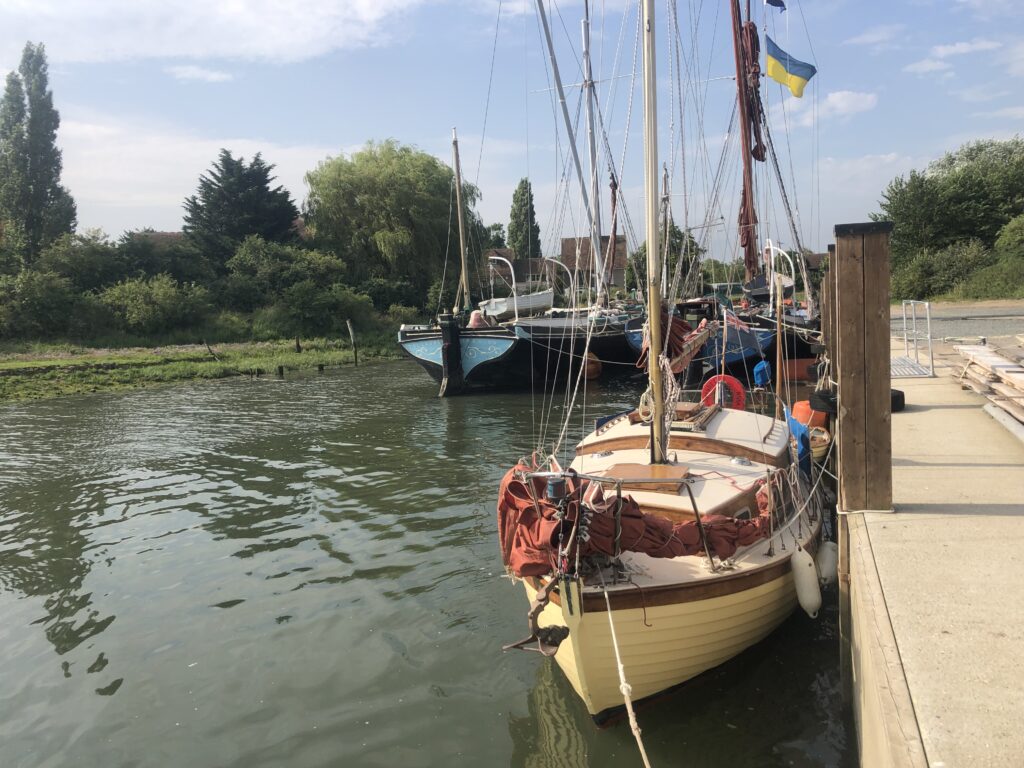
Yes, there are cargoes very suited to sail transit, but these are limited in scale. There are sail cargo operations in various areas of the world – to take on containerisation, not a very likely prospect!
I thought the film was somewhat naive in this respect, as was forcibly put by the ‘chap on sitting on my left’ – Michael Everard. Michael is a member of the British Shipping Council, and ex director/owner of Everard Shipping. (Interestingly, but outwith this post, we had a bit of a chat about ‘history’ back to the last trading matches and the destruction of the Everard vessels… I also talked about my RFA life and ships in general.)
Afterwards, talking to the ‘story teller’ at the event we attended aboard the Blue Mermaid in St Katharine Docks – we travelled up from Faversham by train – I suggested, tongue in cheek, that she read my books about the changing coast and environment: there are others like me out here who espouse similar feelings and have been at it for a long time… Not a new fad to fit the climate change warnings.
The film was worthwhile viewing and it contained food for thought. The total reliance on wind, tide and oar is a pipe dream though: as Richard Titchener of the Sea-change Sailing Trust said, even the Blue Mermaid needs a pluck by a motty boat at times, and, they and other engine-less spritsail barges use the barge’s boat with an outboard in windless conditions when the need arises…
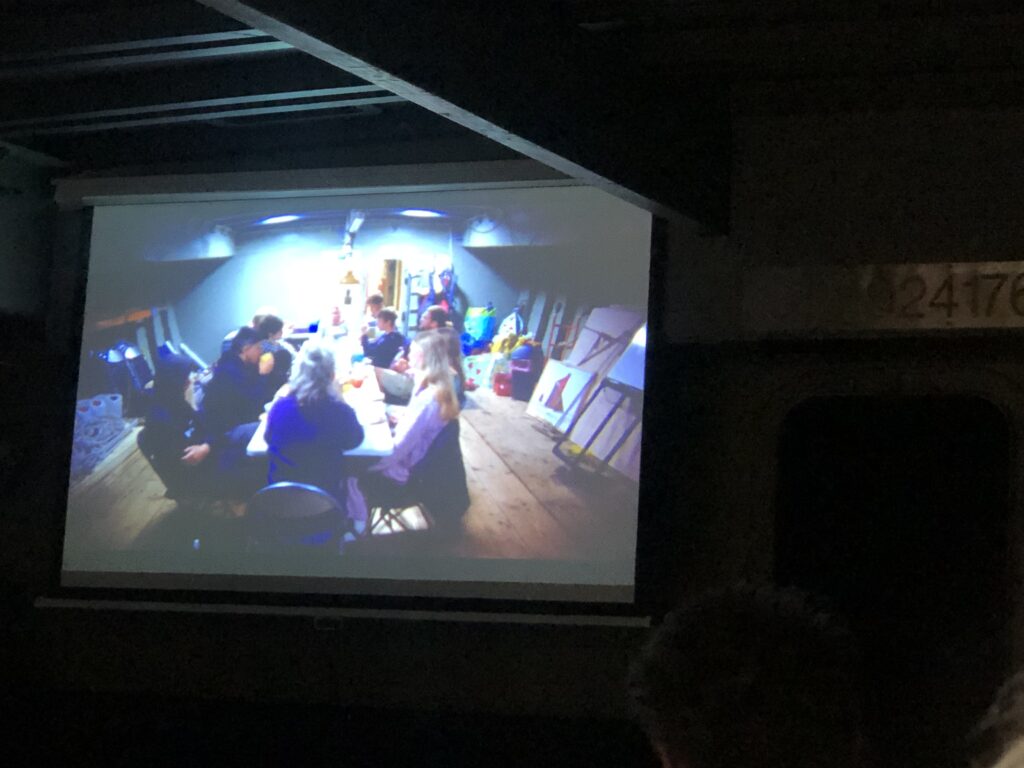
For me, the film is far too long – forty minutes could be cut to deliver same message, I thought. I hope some radical editing takes place if it goes further.
The book: https://www.waterstones.com/book/wind-tide-and-oar/huw-wahl/artur-jaschke/9789083384122?sv1=affiliate&sv_campaign_id=626889&awc=3787_1726593924_014433b8788178fa393cc2f988760242&utm_source=626889&utm_medium=affiliate&utm_campaign=Preisvergleich
The film web site: https://www.windtideandoar.com/
